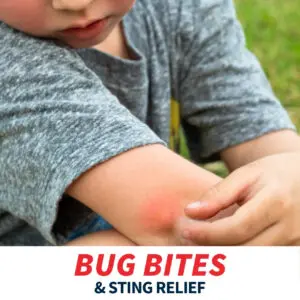Ear Infection: Causes, Treatment, and Prevention
 Ear infections are a common, uncomfortable ailment, often associated with children, but can affect adults, as well. In fact, other than regular wellness baby visits, ear infections are the most common reason for a visit to the pediatrician.
Ear infections are a common, uncomfortable ailment, often associated with children, but can affect adults, as well. In fact, other than regular wellness baby visits, ear infections are the most common reason for a visit to the pediatrician.
What is an Ear Infection?
Ear infections, also known as otitis media, is an infection within the middle ear. The middle ear is located within the space behind the eardrum that houses the tiny bones that pick up sound vibrations to pass to the inner ear. The infection most commonly occurs with a cold, flu, or respiratory infection, because the middle ear is connected to the respiratory tract by the Eustachian tube. Germs from the nose or sinuses can get into this tube, enter the middle ear, and grow, resulting in infection.
Typically, the middle ear space is well-ventilated, clean and dry from the air that normally passes up through the Eustachian tube. However, when it is clogged or blocked due to allergies, post-nasal drainage, sinus infection, or a cold, the environment becomes perfect for the germs to grow. Because the Eustachian tube is usually softer and more immature in small children, it has a more difficult time staying open to dry out. When the middle ear becomes infected, the eardrum will appear red and often bulging, and fluid will be present behind the eardrum.
Adults with an ear infection typically experience:
- Earache
- Sharp, stabbing pain with immediate warm drainage from the ear canal
- Feeling of fullness in the ear
- Nausea
- Muffled hearing
- Ear drainage
Children will often have some of the same symptoms, but it is important to look for visual clues in those who are very young, including:
- Tugging on the ear
- Interrupted sleep
- Fever
- Restlessness and irritability
- Diminished appetite
- Crying when lying down at night
- Ear drainage
Treating an Ear Infection
In many cases with children, the ear infection may be caused by bacteria and treated with antibiotics. If you or your child receive a prescription, be sure to follow the instructions and finish the entire course, even if you feel better after a few doses. Leaving antibiotics unfinished could result in the infection returning and becoming resistant to treatment.
If the infection is caused by a virus, unfortunately there will not be any medication to cure it. However, you can take a pain reliever – acetaminophen or ibuprofen – to stay comfortable while waiting for the infection to resolve. Using a heating pad on low can also help reduce pain without the use of medication, but practice caution when using this method on children.
For infections that result in serious complications, leave fluid in the ear for an extended period of time, or those who suffer from frequent infections, a procedure called a myringotomy may be required. In simpler terms, this procedure is commonly referred to as having tubes put into the ears. These tubes allow fluid to drain out easily and prevent future build up, reducing pain, improving hearing, and cutting down on the number of infections. The tubes will usually fall out on their own in about 6 to 18 months.
Can Ear Infections be Prevented?
Because ear infections are often a byproduct of another illness, practicing good hygiene and encouraging your children to do so will help prevent the spread of germs. For young children, however, there are other ways that ear infections may be developed, including:
- Bottles & Pacifiers: If children drink from a bottle while lying down or use a pacifier regularly, they are more likely to get ear infections.
- Attending Daycare: This goes hand-in-hand with exposure to germs as more children are present to help spread illnesses to one another that may result in ear infection.
- Poor Air Quality: Regular exposure to air pollution, vaping/e-cigarettes and cigarette smoke can increase risk of infection.
- Not Vaccinating: Keeping up-to-date on your child’s routine shots will help prevent illnesses that may encourage development of ear infections.
Whenever you suspect an ear infection, be sure to contact your child’s doctor right away, particularly if accompanied by a fever, strong pain, or discharge from the ear. Any adult experiencing pain or fluids coming from the ear should see a doctor right away for evaluation.
Leaving an ear infection untreated could lead to serious complications, including mastoiditis (inflammation of a bone adjacent to the ear), hearing loss, perforated eardrum, meningitis, facial nerve paralysis, and, in adults, risk of Meiere’s disease. If you think you or your child may be suffering from an ear infection, don’t hesitate for treatment. Visit one of our convenient locations today.




